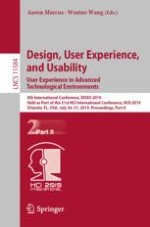2019 | OriginalPaper | Chapter
Artificial Intelligence Augments Design Creativity: A Typeface Family Design Experiment
Authors : Zhen Zeng, Xiaohua Sun, Xiang Liao
Published in: Design, User Experience, and Usability. User Experience in Advanced Technological Environments
Publisher: Springer International Publishing
Activate our intelligent search to find suitable subject content or patents.
Select sections of text to find matching patents with Artificial Intelligence. powered by
Select sections of text to find additional relevant content using AI-assisted search. powered by
